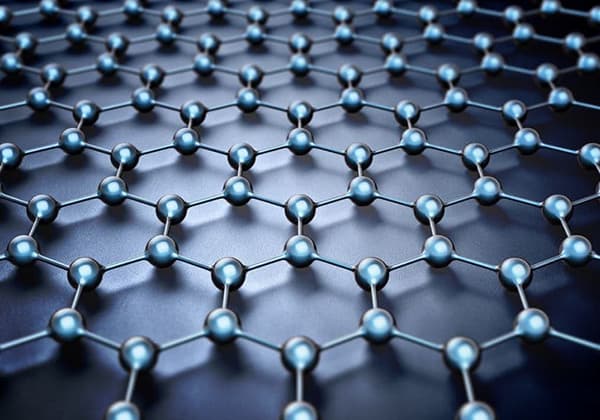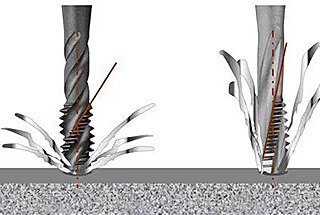
Imagine a material that remembers its shape even after being twisted, bent, or stretched. Shape memory alloys (SMAs) do just that, transforming engineering across various fields. This article explores how SMAs convert waste heat into mechanical energy, improve medical devices, and enhance everyday products like household appliances. Dive in to understand the revolutionary impact of SMAs and discover their remarkable applications in modern technology.

Energy development is a significant application area for shape memory alloys. Utilizing the property of shape memory alloys to change form during heating and cooling, low-grade thermal energy, such as waste heat, geothermal energy, and solar energy can be directly converted into mechanical energy for use.
Based on this principle, a variety of thermal engines have been successfully developed, accelerating the miniaturization and portability of thermal engines.
In recent years, researchers worldwide have been developing memory function materials, primarily shape memory, temperature memory, and color memory. Among them, the development of shape memory alloy materials is the fastest.

Due to the superior performance and broad application prospects of shape memory alloy materials in fields like automobiles, robotics, energy development, medical equipment, and household appliances, they have become one of the key new materials to be developed in the 21st century.
Shape memory alloys were the first memory function materials discovered. In the early 1950s, experts at the University of Illinois in the United States accidentally discovered during an experiment that gold-cadmium alloys have a memory shape function.
Later, it was found that indium-thallium alloys also have a similar memory effect, but due to their high cost, they did not attract attention. It wasn’t until 1963 when the U.S. Naval Weapons Research Institute accidentally discovered during their research on nickel-titanium alloys that these alloys have a significant shape memory effect.
They also have many unique advantages that other metals do not possess, such as excellent superelasticity, corrosion resistance, and vibration resistance. This discovery attracted the attention of researchers and research on it began.
In recent years, shape memory alloys have emerged with the rapid development of science and technology, and several dozen alloys with shape memory functions have been developed.
Currently, the most prominent shape memory alloys in practical use include nickel-titanium, copper, and iron (or stainless steel) series.
Nickel-titanium alloys are among the most superior and widely used materials in shape memory alloys. They are characterized by good ductility, shape memory strength, strain, corrosion resistance, electrical resistance, and stability, but they are also high in cost.
These alloys feature both unidirectional and bidirectional shape memory behaviors, and the temperature range at which they exhibit these behaviors can be expanded or reduced through alloy improvements.
In recent years, many countries are working on a series of improved nickel-titanium alloys by adding other elements to further enhance their properties and reduce their costs. For instance, the addition of copper or vanadium, aluminum, chromium, zirconium, and trace amounts of calcium can significantly improve their toughness, machinability, and cuttability.
Moreover, adding rare earth elements and boron, silicon, phosphorus, sulfur, etc., to nickel-titanium-copper alloys can result in shape memory alloys with greatly improved recovery characteristics.
Sumitomo Electric Industries in Japan produces aesthetically pleasing shape memory alloy wires by adding copper (or aluminum, zirconium, vanadium, cobalt, iron) to nickel-titanium alloys and drawing the wire after surface treatment, meeting decorative demands.
Cantoku in Japan has developed a nickel-titanium alloy wire with a diameter half that of a hair strand, which exhibits good composite and weave-ability, elasticity, and thermal sensitivity. These properties make it widely applicable in areas such as car valves, water heaters, water regulators, miniature electric thermal regulators, and bras.
Copper-based shape memory alloys are cheaper and easier to shape than nickel-titanium memory alloys, thus they have significant developmental potential.
However, the strength of copper-based shape memory alloys is inferior to that of nickel-titanium memory alloys, and their memory ability diminishes quickly with repeated heating.
To improve the mechanical properties of copper-based memory alloys, small amounts of titanium, manganese, and zirconium can be added. The best performing and most widely used copper-based shape memory alloy is the copper-zinc-aluminum alloy.
This alloy has a high thermal conductivity and is sensitive to temperature changes, making it suitable for making thermosensitive components. Countries like the US and Japan use copper-zinc-aluminum alloys in automatic window openers for greenhouses and nurseries to regulate room temperature.
However, the resistivity of copper-zinc-aluminum alloys is lower than that of nickel-titanium alloys, making them unsuitable for electric heating situations. The addition of iron or silicon can improve their corrosion resistance.
A company in Tokyo, Japan, has successfully developed a copper-nickel-aluminum alloy with color memory effects. This alloy changes from red to golden in varying temperatures and can be widely used in the production of art crafts, decorations, toys, and household appliances.

Iron-based shape memory alloys are low-cost and abundant, making them more competitive. Developed iron-based shape memory alloys include iron-manganese alloys, iron-platinum alloys, and stainless steel shape memory alloys.
By adding silicon to manganese alloys, iron-manganese-silicon alloys with good shape memory effects can be obtained. These have high strength but poor corrosion resistance.
The addition of chromium can greatly improve their corrosion resistance. Iron-based shape memory alloys are now widely used in manufacturing pipe joints, rivets, and other connectors, as well as fixtures. They are not only easy to install and operate but also safe and reliable, making them promising functional materials.
Newly developed stainless steel shape memory alloys in Japan not only have excellent shape recovery characteristics and corrosion resistance but also exhibit good machinability and resistance to high-temperature oxidation.
In addition to the main components of chromium, manganese, silicon, and iron, these alloys contain a certain amount of nickel or cobalt, copper, and nitrogen.
These stainless steel shape memory alloys can be melted in traditional steelmaking furnaces and manufactured into finished products using common methods, making them extremely versatile.
Shape memory alloys, due to their superior properties, are widely used in automatic control devices, robotics, automotive industry, energy development, healthcare, and daily consumer goods.
Shape memory alloys function as temperature sensors and actuating elements, making them extremely sensitive for automatic control. One of the most common uses of these alloys is in brakes.
Over a hundred different types of shape memory brakes are currently used in the automotive industry, primarily for controlling engines, transmissions, and suspensions to enhance safety, reliability, and comfort.
Shape memory alloys are also used in noise prevention devices in manual transmission systems and in engine fuel gas control devices. The memory effect and superelasticity of these alloys can be applied to displacement sensors and industrial robot brakes.
The application of shape memory alloy brakes in robots has achieved encouraging results. Using shape memory alloy springs and their alloy wires, small robots can be assembled. By controlling the alloy’s contraction, the robot’s fingers can open, close, and flex.
The robot’s position, actions, and speed are controlled by directly inputting pulsed variable frequency current into the alloy element. The shape recovery force is controlled by the size of the current, making the movements mimic biological muscle movements.
In addition, energy development is another important application field for shape memory alloys. Utilizing the shape-changing properties of shape memory alloys during heating and cooling, low-grade thermal energy such as waste heat, geothermal energy, and solar energy can be directly converted into mechanical energy for use.
Based on this principle, a variety of heat engines have been successfully developed, accelerating the miniaturization and lightening of heat engines.
The superelasticity, biocompatibility, and non-toxicity of shape memory alloys have led to their successful application in the medical field.
In dentistry, shape memory alloys can be used to create artificial tooth roots, teeth aligners, and dental crowns. The artificial tooth is fixed on a nickel-titanium alloy gum, and beneath it are double-layer alloy root sheets.
Through surgery, these root sheets are clamped together at low temperatures and implanted into the alveolar bone. Under the influence of body temperature, the root sheets reverse and recover to their original figure-eight shape, firmly anchoring in the alveolar bone.
These artificial tooth roots are corrosion-resistant and biocompatible and are widely used in dentistry.
In addition, shape memory alloys are also used as teeth aligning wires, which are superior to those made of stainless steel. The superelasticity of the memory alloy clip can maintain its elasticity for a long time, eliminating the need for replacement due to elastic relaxation.
This long-term elasticity can shorten the treatment period. Shape memory alloys are also used to make dental crowns, which can automatically adjust as children’s teeth develop, reducing the discomfort and pain of wearing dental crowns.
Medical devices for vascular diseases made from nickel-titanium shape memory alloys have many advantages.
For example, a vascular embolism removal knife made from a shape memory alloy can be processed at low temperature to form a cylindrical shape.
When inserted into the patient’s blood vessels and heated to body temperature, the knife blade automatically flattens due to the shape memory effect, and by rotating it, vascular embolisms or deposits can be removed.
Medical experts have also successfully performed brain aneurysm removal surgeries using a clamp made from a combination of shape memory alloy wires and silver wires.
Shape memory alloys are also widely used in household appliances such as food heaters, air conditioners, and rice cookers.
Sharp Corporation in Japan uses shape memory alloy components to control the conversion between microwave heating and convection heating in food heaters, significantly reducing the volume and weight of the heaters and cutting costs by two-thirds.
Panasonic Corporation uses shape memory alloys to make dual-use air conditioners with wind direction conversion devices.
The wind direction changes sensitively: when the wind temperature is between 32-37°C, it blows downward; when the wind temperature drops to 25-32°C, it automatically changes to blow horizontally.
This device is stable, lightweight, low-cost, and noise-free when the wind door starts, making it popular with users. Shape memory alloys are also widely used to make thermostats for electric rice cookers.
When the temperature rises, it will automatically open and disconnect the circuit. When the temperature drops to a certain level, it will reconnect the power supply and automatically maintain the temperature.
In recent years, “memory” products made from various shape memory alloys have started to sweep the market, with an increasing number of these “memory” items entering everyday life. The application of shape memory alloys is further advancing towards commercialization.
A “memory” bra produced by a Japanese daily goods company was immediately favored by women after it hit the market. This bra is made of a thin and soft nickel-titanium shape memory alloy wire, which is lighter, softer, more elastic, and more comfortable than traditional bras.
Its greatest advantage is that it can revert to its original shape through body temperature sensing even if it deforms after washing.
Furukawa Electric Co., Ltd. in Japan produces shape memory alloy glasses frames that can change shape as the lens expands and contracts, maintaining a tight bond with the lens. The company also manufactures dolls that can change hairstyles using the unique properties of shape memory alloys.
The doll’s hair is made of copper-based shape memory alloy wire, and the hairstyle can change with temperature variation, making it extremely popular among children.
A Japanese shoe manufacturer has introduced the world’s first leather shoes made using shape memory alloys, which are not only soft and comfortable but also effectively prevent the shoes from deforming.
Energy development is a significant application area for shape memory alloys. Utilizing the property of shape memory alloys to change shape when heated and cooled, low-grade thermal energy, such as waste heat, geothermal energy, and solar energy, can be directly converted into mechanical energy for use.
Based on this principle, numerous heat engines have been successfully developed, accelerating the miniaturization and portability of heat engines.








